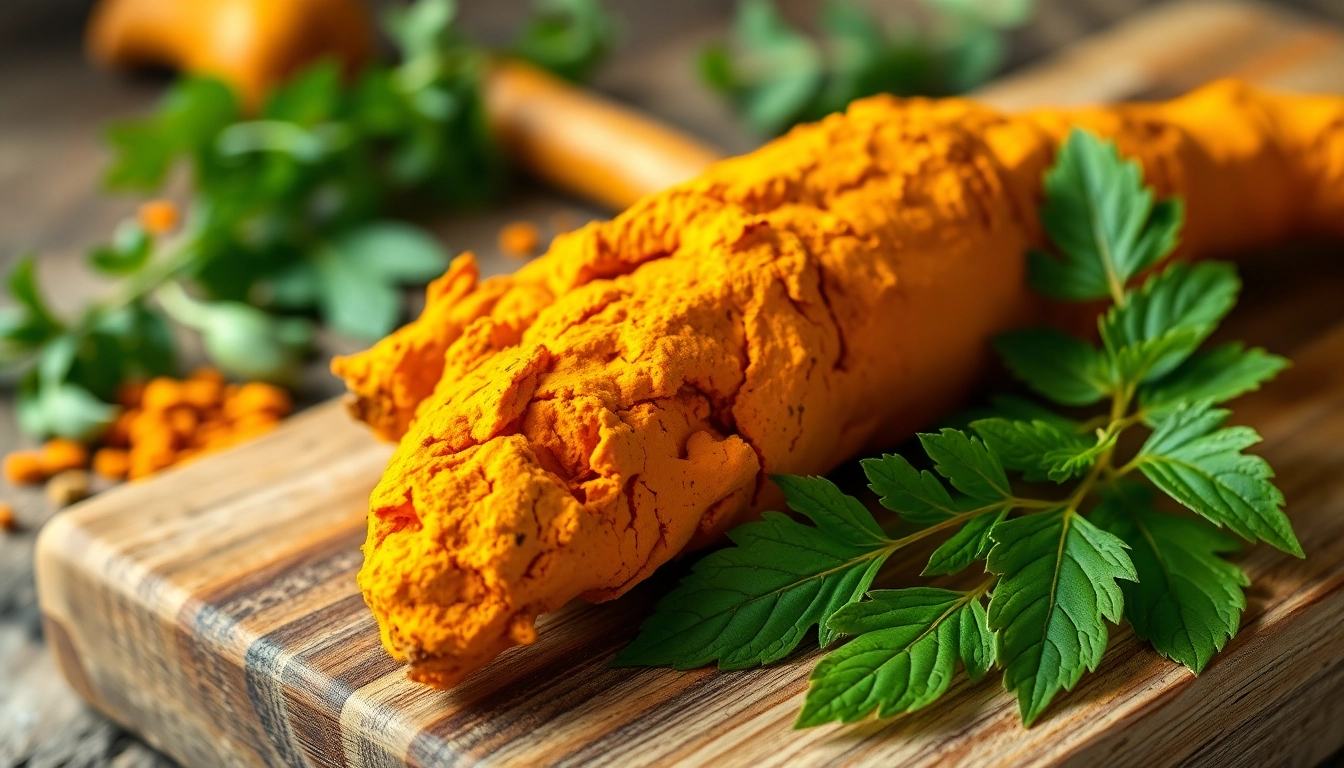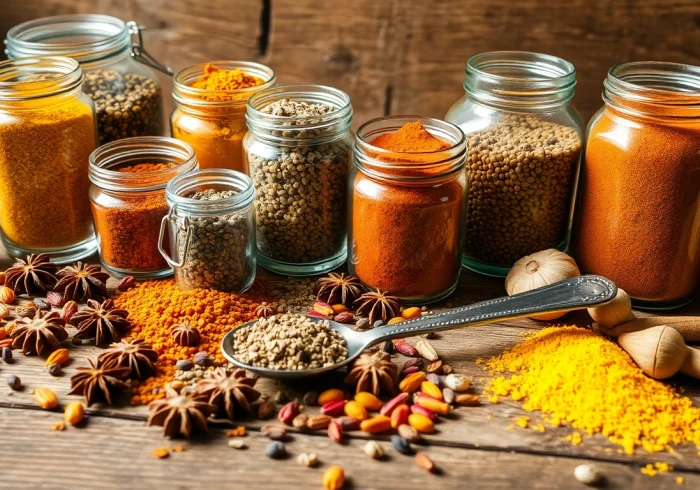Understanding Turmeric Root
What is Turmeric Root?
Turmeric root, scientifically known as Curcuma longa, is a rhizome that has been an integral part of Asian culture for thousands of years. This vibrant yellow-orange root is commonly recognized for its culinary and medicinal attributes. Much like ginger, turmeric is a member of the Zingiberaceae family and is predominantly cultivated in India and other parts of Asia. The root is processed into various forms, including fresh, dried, and powdered, making it a versatile ingredient in kitchens and herbal medicine cabinets around the world.
The primary active compound found in turmeric, curcumin, is renowned for its vast array of health benefits, leading to turmeric’s rise in popularity beyond traditional cuisines and into the realms of health and wellness. For a closer look at the culinary and medicinal benefits of turmeric, Turmeric Root is an excellent resource.
Scientific Background of Turmeric Root
Turmeric has caught the eyes of researchers due to its high curcumin content, thought to be responsible for many of its health-promoting properties. Curcumin exhibits potent anti-inflammatory, antioxidant, and even anticancer effects, as highlighted by numerous studies. Its biological activity hinges on its ability to influence various cellular signaling pathways, making it a focal point in the quest for natural therapies for chronic diseases.
Origins and Culinary History
The history of turmeric dates back more than 4,500 years, with its origins traced to Southeast Asia, particularly in India. Turmeric is deeply embedded in both culinary practices and spiritual traditions, often used in Hindu ceremonies. In cooking, turmeric is celebrated for its warm, earthy flavor, often used in curries, rice dishes, and marinades.
Traditional Ayurvedic medicine regards turmeric as a healing agent, while contemporary applications often highlight its versatility in modern cuisine. Its vivid color also makes it a popular natural dye in various cultural practices.
Health Benefits of Turmeric Root
Anti-Inflammatory Properties
One of the most well-researched benefits of turmeric is its anti-inflammatory properties. Chronic inflammation is linked to numerous diseases, including arthritis, heart disease, and various metabolic disorders. Curcumin has been found to modulate inflammatory pathways in the body, reducing the levels of inflammatory markers significantly over time.
For instance, a study published in the Journal of Medicinal Food demonstrated that daily curcumin supplementation reduced inflammation in individuals with knee osteoarthritis, showcasing significant improvements in pain and overall function. This makes turmeric ideal not just as a spice but also as a preventive measure against chronic inflammation-related conditions.
Antioxidant Effects of Turmeric Root
Turmeric root is rich in antioxidants, compounds that combat oxidative stress in the body. Curcumin uniquely enhances the body’s antioxidant capacity, neutralizing free radicals and encouraging the production of the body’s own antioxidant enzymes.
According to research published in Food & Function, the antioxidant activity of curcumin is significantly higher than that of other antioxidants due to its ability to directly scavenge free radicals and even restore other antioxidants, such as vitamin E, to their active form. This entails potential protections against neurodegenerative diseases, heart ailments, and certain types of cancers.
Potential Impact on Chronic Diseases
Over recent decades, the impacts of curcumin from turmeric root on chronic diseases have drawn increased scientific attention. Conditions such as diabetes, cardiovascular disease, and even certain cancers have shown positive responses to curcumin’s therapeutic properties.
A meta-analysis published in the Journal of Clinical Medicine analyzed multiple studies showing that curcumin supplementation helped improve blood glucose levels and insulin sensitivity, suggesting its utility in diabetes management. Additionally, its role in cardiovascular health is linked through its ability to reduce inflammation and improve endothelial function.
Moreover, its anticancer properties are emerging research areas, where curcumin appears to influence tumor growth and metastasis through various mechanisms, such as inhibiting cell proliferation and inducing apoptosis in cancer cells. While these findings are promising, ongoing research is crucial to solidify turmeric’s role in preventing and managing these diseases.
How to Incorporate Turmeric Root into Your Diet
Cooking with Turmeric Root
Incorporating turmeric root into your meals can be both enjoyable and healthful. Turmeric can be used fresh, ground, or dried, making it a versatile spice. Adding it to stir-fries, soups, and stews not only enhances flavor but significantly boosts the nutritional profile of dishes.
To maximize the absorption of curcumin, it is often recommended to combine turmeric with black pepper, which contains piperine, known to enhance curcumin’s bioavailability by up to 2000%. Additionally, consuming turmeric with fats, such as in coconut milk, can further aid its absorption.
Traditional Uses in Medicine
Beyond culinary uses, turmeric has a longstanding presence in traditional medicine systems like Ayurveda and Traditional Chinese Medicine (TCM). In Ayurveda, turmeric is often prescribed for its anti-inflammatory and antiseptic properties. It’s commonly used to treat various ailments, including digestive issues and skin conditions.
Similarly, in TCM, turmeric is used to promote circulation and relieve symptoms of pain and inflammation. The key is to understand the preparation methods, such as making turmeric tea with honey and lemon or using turmeric paste as a topical application for skin irritations.
Creative Recipes with Turmeric Root
There are countless ways to enjoy turmeric root in creative culinary applications. Here are a few ideas:
- Turmeric Ginger Tea: Steep fresh turmeric and ginger root with hot water, lemon, and a bit of honey for a soothing beverage.
- Golden Milk: Mix turmeric powder or fresh turmeric root with milk (dairy or plant-based), and sweeteners to create a comforting golden milk that’s perfect for bedtime.
- Turmeric Rice: Add turmeric to boiling rice for a vibrant color and subtle flavor booster. It pairs well with coconut milk and garlic.
Purchasing and Storing Turmeric Root
Where to Buy Fresh Turmeric Root
Fresh turmeric root is becoming increasingly accessible in health-focused grocery stores, farmers’ markets, and online. Ensure that you are buying from reputable sources that offer organic products when possible. Brands like Fijian Spice Company are a popular choice for high-quality turmeric roots.
Best Practices for Storage
To maintain the freshness and potency of turmeric root, proper storage is essential. Fresh turmeric should be kept in the refrigerator, ideally in a paper bag or well-ventilated container to absorb excess moisture. When properly stored, fresh turmeric can last for several weeks. Dried turmeric root, on the other hand, should be kept in an airtight container in a cool, dark place, where it can last for months without losing flavor or potency.
Choosing Quality Turmeric Products
When selecting turmeric products, consider quality over quantity. Look for certified organic turmeric, as it is likely grown without harmful pesticides and chemicals. Additionally, check for the curcumin content reported by manufacturers, ensuring it meets your health goals. Certifications from recognized health organizations also add credibility to selected brands.
Frequently Asked Questions About Turmeric Root
What Are the Side Effects of Turmeric Root?
While turmeric root is generally safe for most people, excessive consumption can lead to side effects such as digestive discomfort, nausea, or diarrhea. It may also interact with certain medications, such as blood thinners, so it’s important to consult a healthcare professional before beginning any supplementation.
How Much Turmeric Root Should You Consume?
The recommended dietary allowance for turmeric roots varies. Generally, integrating 1-3 grams per day into your diet is considered effective for enjoying its health benefits. For those considering supplementation, dosing may vary based on product concentrations; hence, it’s essential to follow labeled instructions or seek guidance from a healthcare provider.
Comparing Fresh vs. Dried Turmeric Root
Both fresh and dried turmeric root has its benefits. Fresh turmeric offers a unique flavor and higher levels of certain volatile oils, while dried turmeric root provides convenience and a longer shelf life. Nutritionally, both forms include curcumin but in different concentrations. For maximum health benefits, consider incorporating both into your diet according to your culinary preferences.



